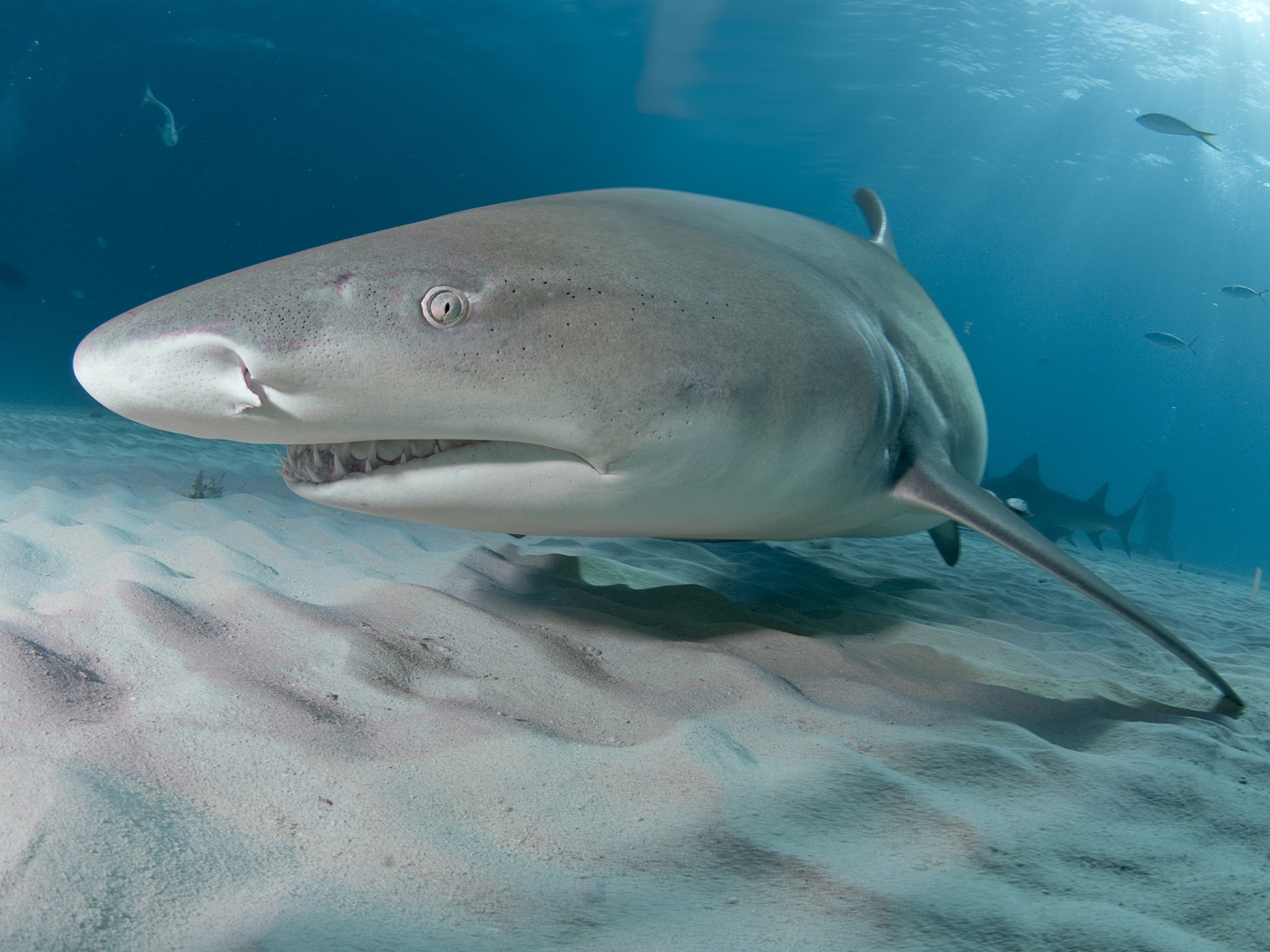Two recent papers by paleontologist Nicholas Longrich and his colleagues describe some unexpected findings in phosphate mines of northern Morocco.1,2 Most surprisingly, they found a pair of short-armed carnivorous dinosaurs mixed in with fish, sharks, and marine turtles in the same layer.1 Their second discovery was a 26-foot-long, previously unknown mosasaur with “bladelike” teeth that was also found in the same formation as the dinosaurs and marine creatures.2 Why are dinosaurs and mosasaurs in the same marine rocks?
Located in the Khouribga region, the mines are extracting phosphate from a unit called the Couche III Formation. Evolutionary scientists interpret this layer as the remains of an ancient seabed. This formation is right at the top of the Cretaceous, or the high water point of the global Flood.3 Is it possible that the Flood offers the best explanation for this unusual mixture of fossils?
Longrich, from the University of Bath, and his co-authors described the variable mixture of fossils in the Couche III Formation:
Fossils occur in laterally extensive bonebeds, potentially extending tens of kilometers. They are dominated by isolated remains, primarily shark and mosasaurid teeth, fish vertebrae, marine reptile bones, and occasionally, dinosaurs. Associated or articulated remains occur, but often show partial disarticulation or missing elements, suggesting decomposition and scavenging during or before emplacement on the seafloor. Dinosaurs are uncommon, but after many years of extensive collecting, a picture of the dinosaur fauna is emerging.1
These two new carnivores (abelisaurs—a type of theropod similar to the Tyrannosaurus rex) aren’t the first dinosaurs found in this same ocean bed. Previously, the Couche III revealed bones from a titanosaurian sauropod (long-necked) dinosaur and a small lambeosaurine hadrosaurid (duck-billed) dinosaur.1 The discovery of these dinosaurs in a marine deposit continues to baffle evolutionary paleontologists.
Longrich wrote:
It’s not clear how dinosaur bones ended up in marine sediments. Dinosaurs may have swum out to islands searching for food, as deer and elephants do today, and some might have drowned. Other dinosaurs might have been washed out to sea by floods or storms, or drowned in rivers that carried them downstream to the ocean. Still others may have died on the shoreline before being carried out on a high tide. But some improbable series of events transported dinosaurs into the ocean.4
Could that improbable series of events be the global Flood? Let’s summarize the facts at the site. First, we have extensive sedimentary layers spread over tens of kilometers that were laid down by water. Second, these beds are filled with phosphate minerals, a precipitate from the ocean, and a plethora of marine fossils, including mosasaurs. “They’re full of fish bones and scales, shark teeth and marine reptiles. Vast numbers of marine reptiles—mosasaurs, plesiosaurs, sea turtles,” said Longrich.4 And third, we have several species of dinosaurs mixed in.
Longrich noted, “This is one of the most diverse marine faunas seen anywhere, at any time in history, and it existed just before the marine reptiles and the dinosaurs went extinct.”5 In an evolutionary worldview, this doesn’t add up. Dinosaurs are not supposed to be in marine rocks. But they are found again and again mixed with marine fossils and in marine rocks all over the world!
European paleontologists were surprised to find that most of their Cretaceous (peak of the Flood) dinosaurs are found in marine rocks. They thought they were rare, but instead it is the rule.6 In their 2015 report, Zoltan Csiki-Sava and his co-authors reported just that—nearly all Late Cretaceous dinosaurs were found in marine sedimentary rocks, including chalk and limestone beds.6 Csiki-Sava’s team concluded, “Although these are isolated skeletal elements [individual bone fossils] that washed out to sea, they are remarkably common and have been reported in surprisingly large numbers since the early discoveries.”6
In 2012, researchers excavated a portion of a theropod dinosaur thighbone from beachfront marine rock north of Seattle.7,8 The fossil, also from Cretaceous layers, was identified as the upper left femur of a theropod dinosaur similar in size to an adult T. rex, although the exact species is unknown. Oddly, the paleontologists who made that discovery found the thighbone while searching for ammonites—extinct marine invertebrates common in the sedimentary rocks exposed along beaches.
Researchers made similar discoveries of ankylosaurian and hadrosaurian dinosaur fossils in marine sedimentary rocks along the coasts of California, Oregon, Washington, and all the way north to Alaska.9 The first dinosaur fossils discovered in Ireland are found in marine rocks, too.10
The global Flood best explains why dinosaurs are found in ocean sediments all over the world, especially at the Cretaceous level. This was the high-water level of the Flood when the ocean covered the entire globe as described in Genesis.3 It is no wonder we find dinosaurs and sharks and mosasaurs all jumbled together. Tsunami-like waves were transporting all sorts of marine animals inland and burying them with land animals in a catastrophic judgement. It’s exactly what you’d expect.
The global Flood was real history. The rocks and the fossils continue to reveal God’s truth.
References
-
Longrich, N. R. et al. 2024. New fossils of Abelisauridae (Dinosauria: Theropoda) from the upper Maastrichtian of Morocco, North Africa. Cretaceous Research. 152 (105677). DOI: https://doi.org/10.1016/j.cretres.2023.1
05677. -
Longrich, N. R. et al. 2024. A bizarre new plioplatecarpine mosasaurid from the Maastrichtian of Morocco. Cretaceous Research. 152 (105870). In Press. Available March 1, 2024. DOI: https://doi.org/10.1016/j.cretres.2024.1
05870. - Clarey, T. 2020. Carved in Stone: Geological Evidence of the Worldwide Flood. Dallas, TX: Institute for Creation Research.
- Longrich, N. R. 2024. ‘Cut down in their prime’: Dinosaurs were thriving in Africa before the asteroid hit. LiveScience. Posted on livescience.com February 20, 2024, accessed March 10, 2024.
- Nalewicki, J. 2024. Dinosaur-age sea monster with ‘face full of huge, dagger-shaped teeth’ discovered in Moroccan mine. LiveScience. Posted on livescience.com March 6, 2024, accessed March 11, 2024.
- Csiki-Sava, Z. et al. 2015. Island life in the Cretaceous-faunal composition, biogeography, evolution, and extinction of land-living vertebrates on the Late Cretaceous European archipelago. ZooKeys. 469: 1–161.
- Hebert, J. Dinosaur thighbone found in marine rock. Creation Science Update. Posted on ICR.org June 4, 2015, accessed March 11, 2024.
- Peecook, B. R. and C. A. Sidor. 2015. The First Dinosaur from Washington State and a Review of Pacific Coast Dinosaurs from North America. PLOS ONE. 10 (5): e0127792.
- Geggel, L. Huge Dinosaur Thighbone Found on Washington Beach. LiveScience. Posted on livescience.com May 20, 2015, accessed online March 11, 2024.
- Simms, M. J. et al. 2020. First dinosaur remains from Ireland. Proceedings of the Geologists’ Association. 132 (6): 771–779.
Stage image: Skull of Abelisaurus
Stage image credit: Copyright © Ceratops Yuta, 2020. Used in accordance with federal copyright (fair use doctrine) law. Usage by ICR does not imply endorsement of copyright holder.
* Dr. Clarey is Director of Research at the Institute for Creation Research and earned his doctorate in geology from Western Michigan University.



















